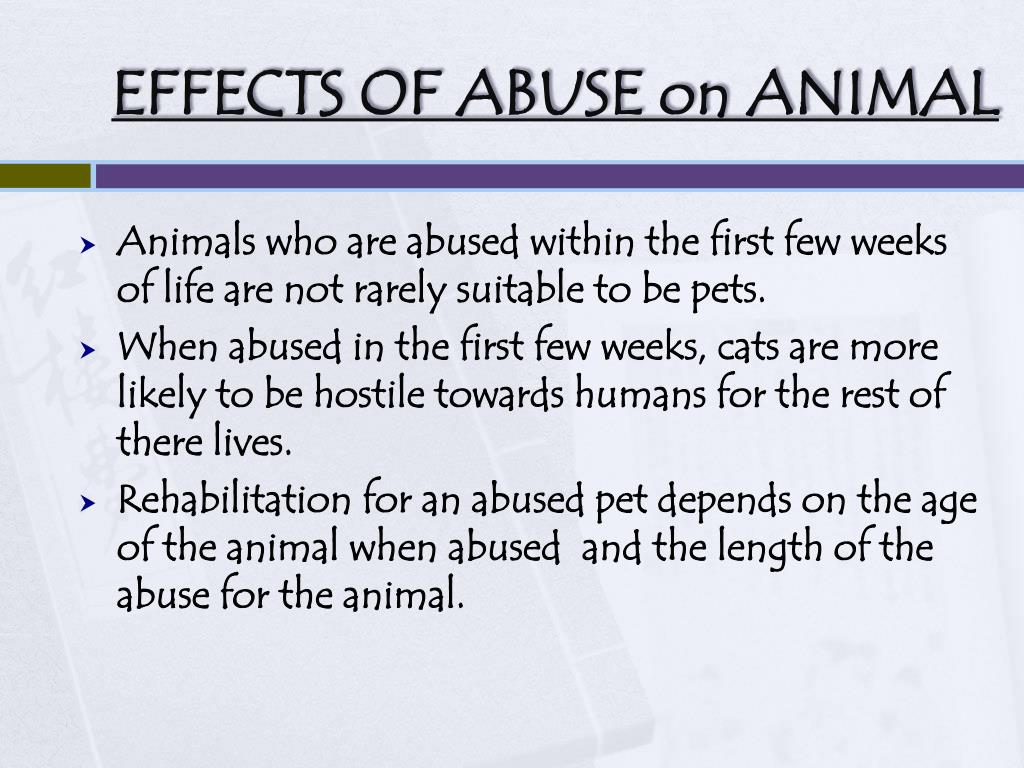The dark shadow of animal cruelty casts a long and disturbing silhouette over both animal welfare and human society. The ramifications of such maltreatment, while often concealed from the general public, reverberate throughout various facets of life, affecting not only the mistreated animals but also the communities and individuals interconnected with them. Understanding these long-term effects is paramount, as it provides insight into the pervasive nature of cruelty and its multifaceted consequences.
Animal cruelty manifests in various forms, including physical abuse, neglect, and abandonment. Each type carries its own spectrum of repercussions, yet the overarching themes emerge starkly across species and settings. Animals subjected to cruelty frequently face immediate physical harm—injuries that can lead to chronic pain, disability, or premature death. However, beyond the visible scars lies a deeper emotional trauma that permeates their very being.
One of the most insidious effects of abuse is the psychological damage inflicted upon the victims. Animals that endure physical violence often exhibit signs of fear and anxiety. This psychological scar can linger long after the abuse has ceased, resulting in behavioral issues such as aggression, excessive timidity, or withdrawal. For animals previously housed in nurturing environments, the transition to a cruel reality can instigate a profound identity crisis. They become unrecognizable, exhibiting traits inconsistent with their species’ norms.
Moreover, the phenomenon of PTSD (post-traumatic stress disorder) is not exclusive to humans. Reports have documented that animals subjected to cruel treatment can develop trauma responses akin to PTSD. These manifestations may include hyper-vigilance, startling easily at loud sounds, or displaying uncharacteristic aggression. Such psychological repercussions not only affect the animal’s quality of life but also complicate rehabilitation efforts. The road to healing is often long and fraught with challenges, requiring specialized intervention and support before these sentient beings can fully reclaim their vivacity.
It is also important to consider the ripple effect of animal cruelty on human society. Studies have consistently revealed a correlation between violent behavior towards animals and larger societal violence. Individuals who engage in animal cruelty are statistically more likely to perpetrate violence against other humans. This troubling connection highlights an urgent need for intervention, as the abuse of animals can serve as a precursor to more widespread societal issues, including domestic violence and criminal behavior.
The tragic intertwining of animal and human suffering is particularly evident in communities where animal abuse is prevalent. Such environments often breed a culture of desensitization to violence. The normalization of cruelty towards animals can desensitize bystanders, leading to an erosion of empathy and compassion. This desensitization is not merely a moral failing; it can manifest in tangible social disorders, including increased incidences of neglect or abuse towards children and vulnerable populations. The cycle of violence perpetuates, creating an environment where the sanctity of life—be it animal or human—is profoundly diminished.
The economic impact of animal cruelty further complicates the issue. Communities burdened with high rates of animal abuse often face increased costs associated with animal control, law enforcement, and rehabilitation efforts. Shelters become inundated with abandoned or abused animals, straining resources and diverting necessary funds from other welfare programs. The societal burden extends beyond mere economic figures; it reflects a moral obligation compromised by systemic neglect. The challenge lies in addressing not only the animals’ needs but also in fostering a culture that prioritizes compassion over cruelty.
In addition to the psychological and societal effects, there is a growing body of research that links companion animals with improved health and emotional stability in humans. However, the cruelty inflicted upon animals can invert this relationship. Pets—trusted companions—become sources of anxiety rather than solace for their guardians when subjected to neglect or abuse. This complicated emotional nexus can leave owners feeling helpless, further exacerbating psychological distress and fostering a cycle of dysfunction.
Efforts to combat the long-term effects of animal cruelty necessitate a multifaceted approach. Education plays a vital role in fostering understanding and empathy towards animals. By promoting humane treatment and respect for all living beings, society can work to diminish the cycles of violence. Outreach programs that connect communities, teaching compassion and responsible ownership, can cultivate a new generation of advocates for animal welfare and contribute to breaking the chains of abuse.
Legislation also remains a pivotal tool in confronting animal cruelty. Stricter laws and enforcement can deter potential abusers and provide critical protections for vulnerable creatures. However, laws alone are insufficient; education and community involvement are requisite components of sustainable change. Comprehensive animal welfare initiatives can create a robust framework for prevention, ensuring that resources are allocated for both immediate interventions and long-term strategies.
Ultimately, the stakes are high. The long-term effects of animal cruelty reverberate far beyond individual cases; they resonate through families, communities, and society at large. Addressing the myriad consequences—psychological trauma, societal desensitization, economic burden—can pave the way for a more compassionate world. It is a call to action for individuals, communities, and policymakers alike to recognize that the treatment of animals ultimately reflects our values and humanity. Working together to fight against animal cruelty benefits not only the innocent creatures who suffer but enhances the moral fabric of society itself.








